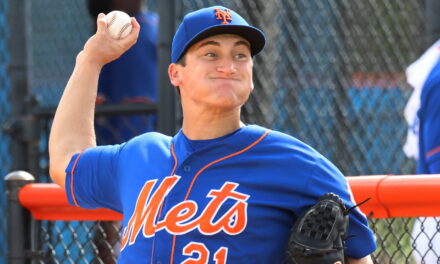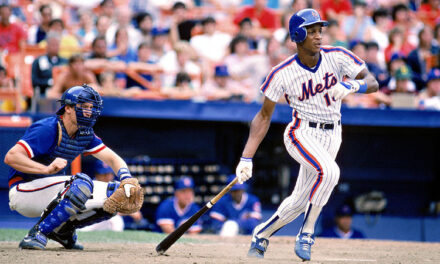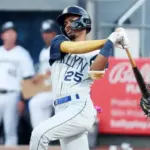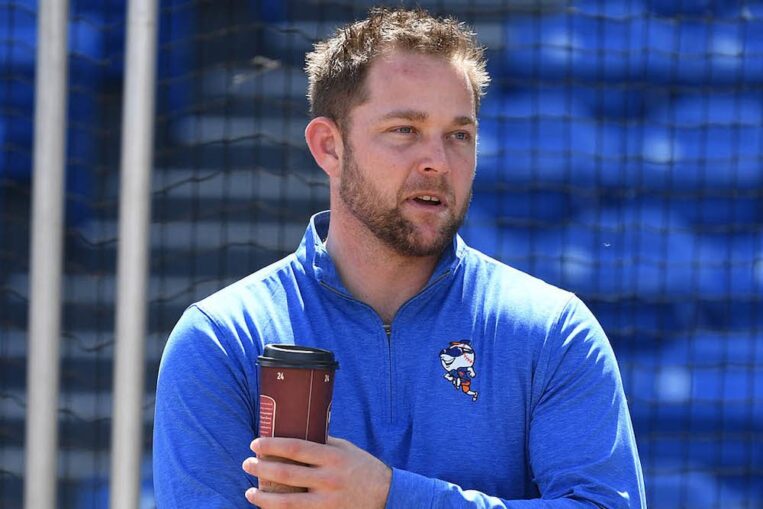
The Mets hired Adam Guttridge in November of 2018 to be their assistant general manager of systematic development.
New Mets GM Brodie Van Wagenen was hired the month before and vowed to bolster the analytics department. According to an article by Tim Britton of The Athletic, Guttridge played a key role in acquiring slugger J.D. Davis and holding onto the versatile Jeff McNeil. Both key contributors to the Mets in 2019 and likely going forward.
Guttridge worked for the Milwaukee Brewers from 2010 to 2015, including as the manager of baseball research and development the last two seasons. The Rockies fan got his start in the baseball industry as an intern and statistical consultant in 2004.
Guttridge, along with David Ogren, founded Normalized Empirical Individual Forecasting Index (NEIFI) in 2015, a player evaluation firm who offers advanced talent assessments and projections system to all levels of professional baseball, as well as the NCAA.
He was an adjunct professor at New York University, teaching Inside Baseball: Analytics in Action and, side note. Guttridge is also a former writer for The Hardball Times, covering the Florida State League and the 2009 MLB trade deadline. He co-wrote a 2016 Fangraphs piece with Ogren titled The Future of Technology in Player Development.
I had the chance to talk to Guttridge last week on a variety of topics (anything about Covid-19 and potential return of baseball in 2020 was off-limits for obvious reasons).
MMO – What’s does the typical day of an assistant general manager of systematic development look like? How does that differ from offseason to the regular season?
Adam Guttridge – The work of any given day or week may span from player development to player evaluation, and MLB to amateur. Planning is your friend, and cycles are long. July might be the time when player development is most active, but the success you are or aren’t having in July probably depends most work that was done the prior November. Similarly, the trade deadline, the draft… these seem like single moments in time, but are actually long-tailed events.
So it may be surprising that a day or a week in January would be draft- focused, or an offseason week would be PD-focused, but that’s what’s necessary to reach your goals. Alternatively, player evaluation and acquisition require constant vigilance and preparedness, because opportunities/needs can arise at any time, and the window to make a positive move is typically brief.
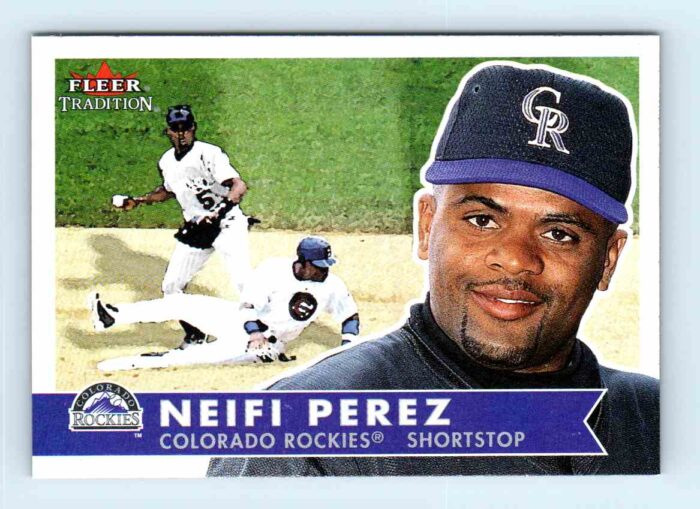
MMO – How did NEIFI get started, what was the goal, and did you really name it after Neifi Perez?
Guttridge – Funny enough, NEIFI began on a Colorado Rockies fan message board over 20 years ago, basically as a way to settle arguments about players. Everything else really grew from there. David Ogren was its author, and continues to be its primary driving force.
Yes, it’s named for Neifi Perez. The full name is Normalized Empirical Individual Forecasting Index. In its most base form, NEIFI is and was an audit of logic. “Projection system” is a term we don’t really use. If someone believes X is a better player than Y, how are they arriving at that conclusion? How would that same logic hold up if applied to the next 10 or 100 or 1000 players? How is this argument complete or incomplete, verifiable or not?
The project of NEIFI has been 20+ years of scrutinizing how elements of judgement or analysis do or don’t make sense, and refining how we use information to create an estimate of player talent. But that’s overwhelmingly an exercise in logic, and minimally about math or computing power.
MMO – How did you being hired by the Mets come about? Did anything about your first season in New York surprise you?
Guttridge – Brodie and I had encountered one another through NEIFI work, and were in regular contact since 2016. I had been living primarily in Manhattan for several years, so while New York itself wasn’t a new experience, the scope of this role is broad. But we both wanted to be Mets specifically because of the New York energy and all that comes with it.

MMO – What did you see from J.D. Davis that made you see him as a strong trade target?
Guttridge – Just generally, there’s plenty of value in simply letting a player speak for himself. JD had nothing left to prove in AAA. What he did in 2019 was really a continuation of what he’d already been doing, when given regular playing time. The credit belongs to him, and we’re fortunate that we could provide an opportunity for him to shine.
MMO – How do you plan on incorporating raspado and other analytics in order to help pitchers like Rick Porcello and Michael Wacha get back to where they were? (Or simply comment on general use of raspado/analytics and how they can help in a pitchers development).
Guttridge – Relying on true experts who can build great relationships with our players. Brodie has completely
revamped the way the organization uses information, and the pitching analysts we have in-house have done an excellent job of connecting with our pitchers going back to last year.
Adding Jeremy Hefner as our MLB pitching coach is something we’re very excited about. Adding Ricky Meinhold as our pitching coordinator is another big move towards leveraging all tools at our disposal throughout the organization.
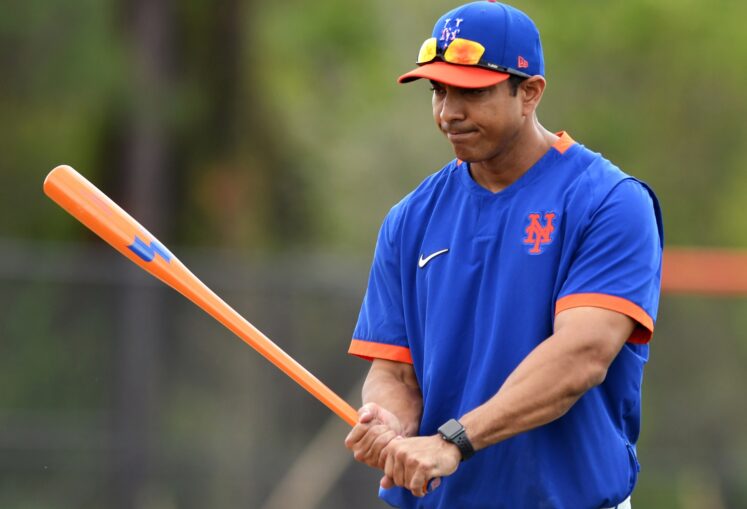
MMO – How did hiring Luis Rojas as the quality control coach help you communicate numbers/thought processes from the front office to the players?
Guttridge – Luis was in communication with analysts and sports scientists every day of 2019. When Luis joined the MLB club last year, he already had trust and credibility with his players. That’s absolutely key. All of our homegrown players had played for Luis at some point.
Luis is an A+ genuine person. He grew up in the game and has deep history as a Met, but he’s also had success managing winterball, which is an especially high-pressure environment. His range of experience and familiarity with our players helped us greatly last year. He’s a no-nonsense communicator who has player buy-in.
MMO – If you had to pick one stat to evaluate a hitter, what would it be and why? How about starting pitchers?
Guttridge – What I might endorse is fairly different from what’s in the public space. That said, Matt Swartz’s SIERA was an under-appreciated attempt to go beyond xFIP. Offensively, Andrew Perpetua’s xStats (Perpetua worked at NEIFI and for the Mets during 2019 season) were ahead of their time.
MMO – You pushed to keep Jeff McNeil during trade talks last year, what did you see from him that made you do that?
Guttridge – Brodie makes all player decisions, and always includes multiple voices. I’m lucky to be among those
voices. His office is collaborative.
Jeff himself is an outlier on several fronts. The more a player breaks the typical mold, and/or breaks expectations, the more skepticism he can face. As mentioned re: JD, we try to let the players speak for themselves rather than painting our own narratives, or outside narratives, onto them. His 2018 debut was plainly great, and 2019 built off that even further.
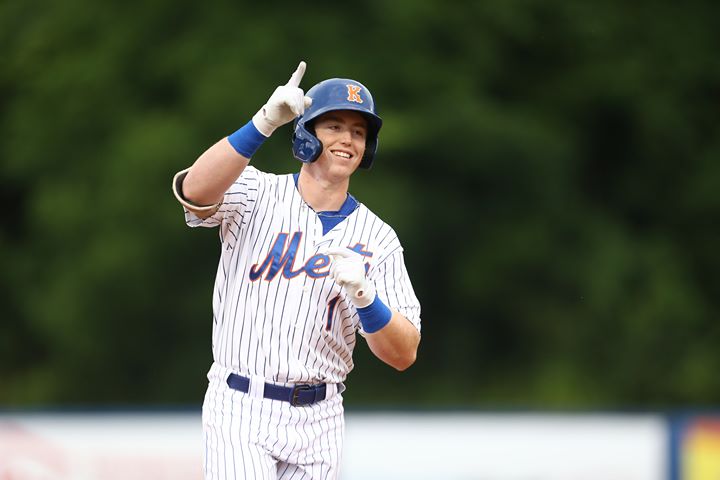
Photo by Allen Greene Photography
MMO – You guys had a great draft in 2019 getting arguably three first round type talents in Brett Baty, Matthew Allan, and Josh Wolf, did the analytics department (I know you don’t like calling it that) play a role in that along with scouting?
Guttridge – We don’t really follow the analytics/scouting dichotomy. We’re just people trying to make wise decisions. The commitment to continual learning by our amateur group is truly special, and certainly
includes so-called “analytics”.
I’m not sure the Mets get enough credit for the percentage of their talent which has been homegrown. And much of the credit for that predates those of us who joined the organization in 2018. Tommy Tanous and Marc Tramuta are wonderful to work with, and true students of the game. Omar has generations worth of experience on both the amateur and international amateur fronts, and a long track record of success.
MMO – How did you come up with the Automated Prospect Model?
Guttridge – The prospect model was a natural outgrowth of NEIFI. It all lives within the same NEIFI framework for present talent evaluation, and as NEIFI was honed in general, has been a matter of refining our
understanding of how different players develop. (Guttridge talked about his automated prospect model during the MIT Sloan Sports Analytics Conference a few years ago.)
MMO – What do you think could be the next wave of public analytics we could see on places like Baseball Savant and FanGraphs?
Guttridge – Many of the biggest gains in analysis have come from simply challenging or re-imagining prior beliefs or prior research. Voros McCraken’s work on DIPS, Mike Fast’s catcher receiving audit, or David Smyth’s
BaseRuns are prime examples.
The durable trait of good analysis is asking interesting questions, and then being aware of whatever assumptions or biases you’re taking on board in seeking the answer. Don’t assume that because a question has been researched 10x before, that everything interesting is known. It may have been approached from an incorrect or incomplete angle.
The value of understanding the foundations can’t be overstated. If you restrict yourself to analyzing Statcast data, yet can’t explain why you’d prefer one run estimator versus another, you’ll be limited.
MMO – You’ve been lauded for the way you communicate analytics, why do you think that is so important and what can the Baseball community as a whole do to better bridge the gap between old school baseball minds and analytics?
Guttridge – I was especially fortunate to grow up where I did (in Sarasota, FL), surrounded by people who played the game professionally. I probably annoyed half of them beyond belief with constant questions or ideas. I just loved the game, and playing it.
I’ve also genuinely never understood the whole old school / new school breakdown, at least in any terms that make sense. It’s baseball. We’re all trying to understand it better.
If your understanding is beyond terms you can communicate, your understanding might not be that good. I believe in the productive side of healthy debate. Putting honest opinions or ideas into the air allows others to test them for us, and highlight if we are omitting something, taking leaps we shouldn’t be, or saying something which doesn’t quite line up with reality. It’s the opportunity to improve your thought process. An organization which avoids the open clash of ideas won’t grow.
MMO – What was it like working with an aggressive first-time GM?
Guttridge – Brodie demands excellence in all domains. That’s the type of environment you want to be in if you love the game and want to win.
From before day 1 on the job, Brodie was determined not to accept status quo. He doesn’t come from the typical GM’s background, and therefore is more of a free thinker, not as bound by convention. He’s not one to sit back and wait—he wants to win every game, and if something isn’t working he won’t rest until he feels he has clarity. He’s one of the most tireless workers you would ever meet. He also delegates, and trusts the people around him to execute. His relationship with Allard and Omar, both of whom have been GM’s, is something he appreciates greatly
MMO – Thank you for your time!



